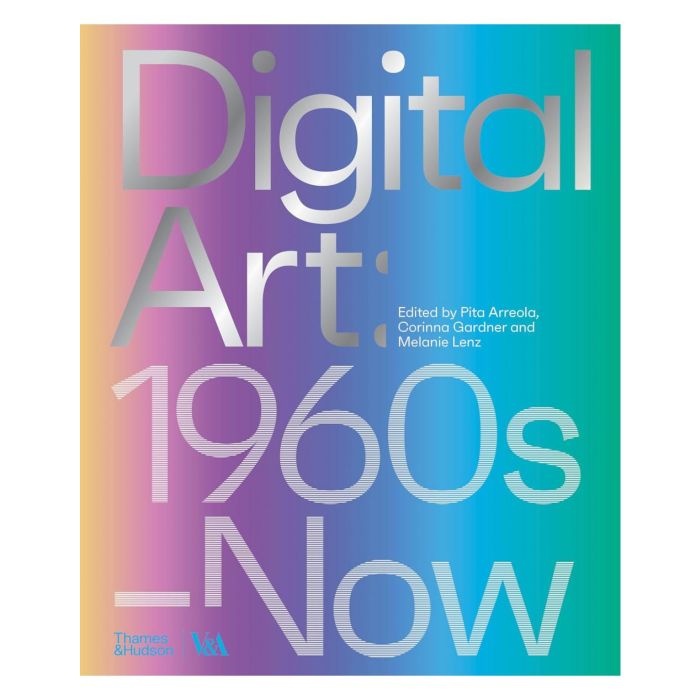My Cart
Your cart is empty
Looks like you haven't made your choice yet.
- Subtotal
Digital Art: 1960s–Now

- T & H Distributed
- Victoria and Albert Museum
- by Pita Arreola, Corinna Gardner, Melanie Lenz
More Information
| Publisher | T & H Distributed |
|---|---|
| ISBN | 9780500480977 |
| Author(s) | Pita Arreola, Corinna Gardner, Melanie Lenz |
| Publication date | October 2024 |
| Edition | Hardback |
| Dimensions | 280 x 230 mm |
| Illustrations | 209 col.ill. |
| Pages | 208 |
| Language(s) | English ed. |
| Exhibition | Victoria and Albert Museum |
Description
A new history of digital art from the 1960s to the present day, with decade-by-decade essays exploring evolving digital art practices, alongside interviews with artists, gallerists, museum curators and collectors.
This is the global story of digital art from its earliest beginnings to the innovative work of today, encompassing wide-ranging, experimental practices, from computer-generated works on paper created by mathematicians, scientists, engineers, programmers and artists in the 1960s to interactive installations, virtual reality, net art and videogames. A collaborative, dynamic approach still characterizes the practice of today’s digital artists, who employ technology as a tool while examining its social, ethical and political impact.
Digital Art: 1960s–Now delves into ideas of artificial intelligence, computer animation, simulation and cybernetics through the historic works of pioneering artists such as Analívia Cordeiro, Manfred Mohr, Vera Molnar and Frieder Nake, alongside renowned contemporary practitioners including Danielle Brathwaite-Shirley, Ibiye Camp, Sarah Friend, Trevor Paglen and Anna Ridler. Decade-by-decade essays by leading authorities explore changing digital art practices. Interviews and discussions with prominent artists, gallerists, museum curators and collectors at the forefront of the discipline offer further insights in this absorbing illustrated study of the evolution of digital art and its future possibilities.

Digital Art: 1960s–Now
